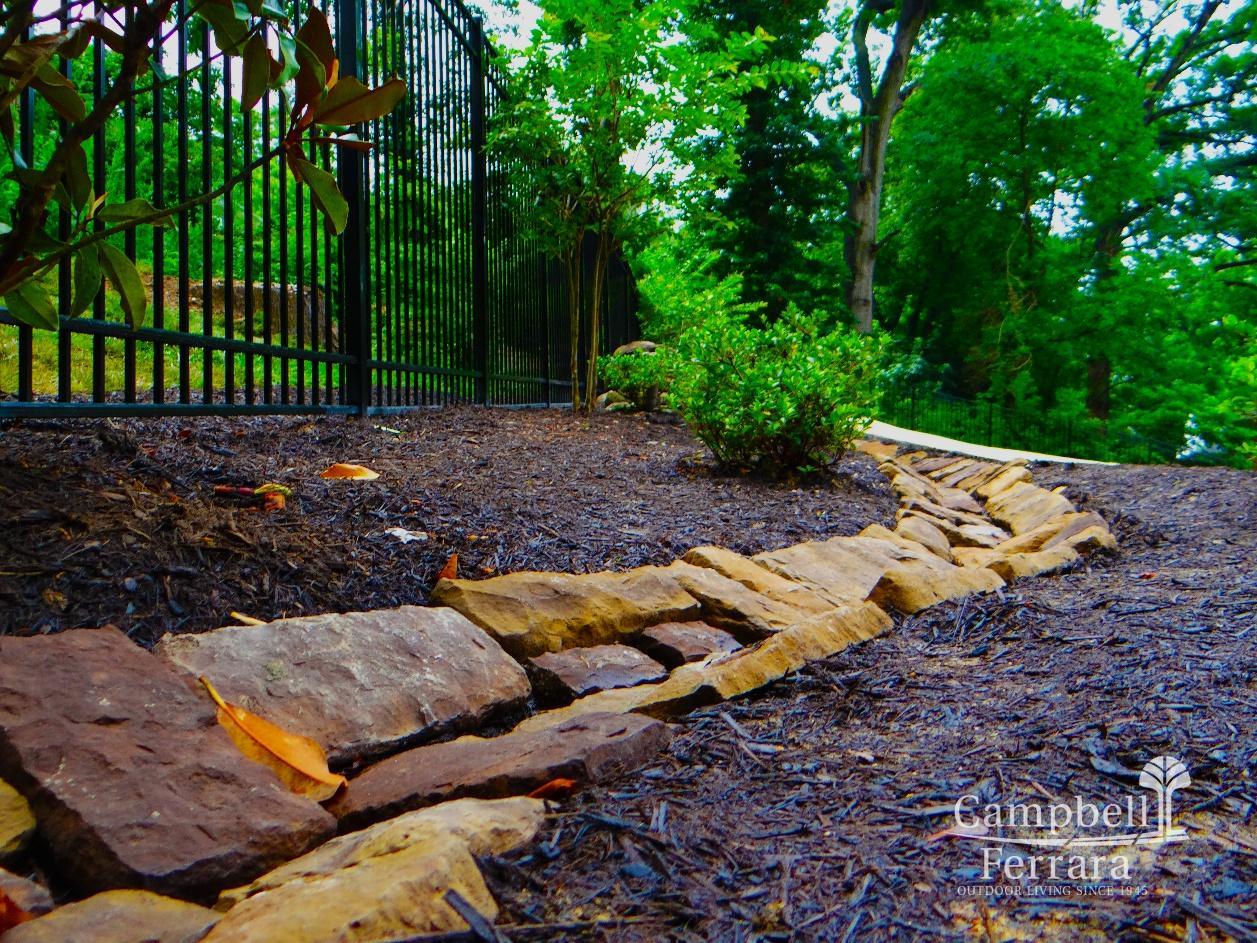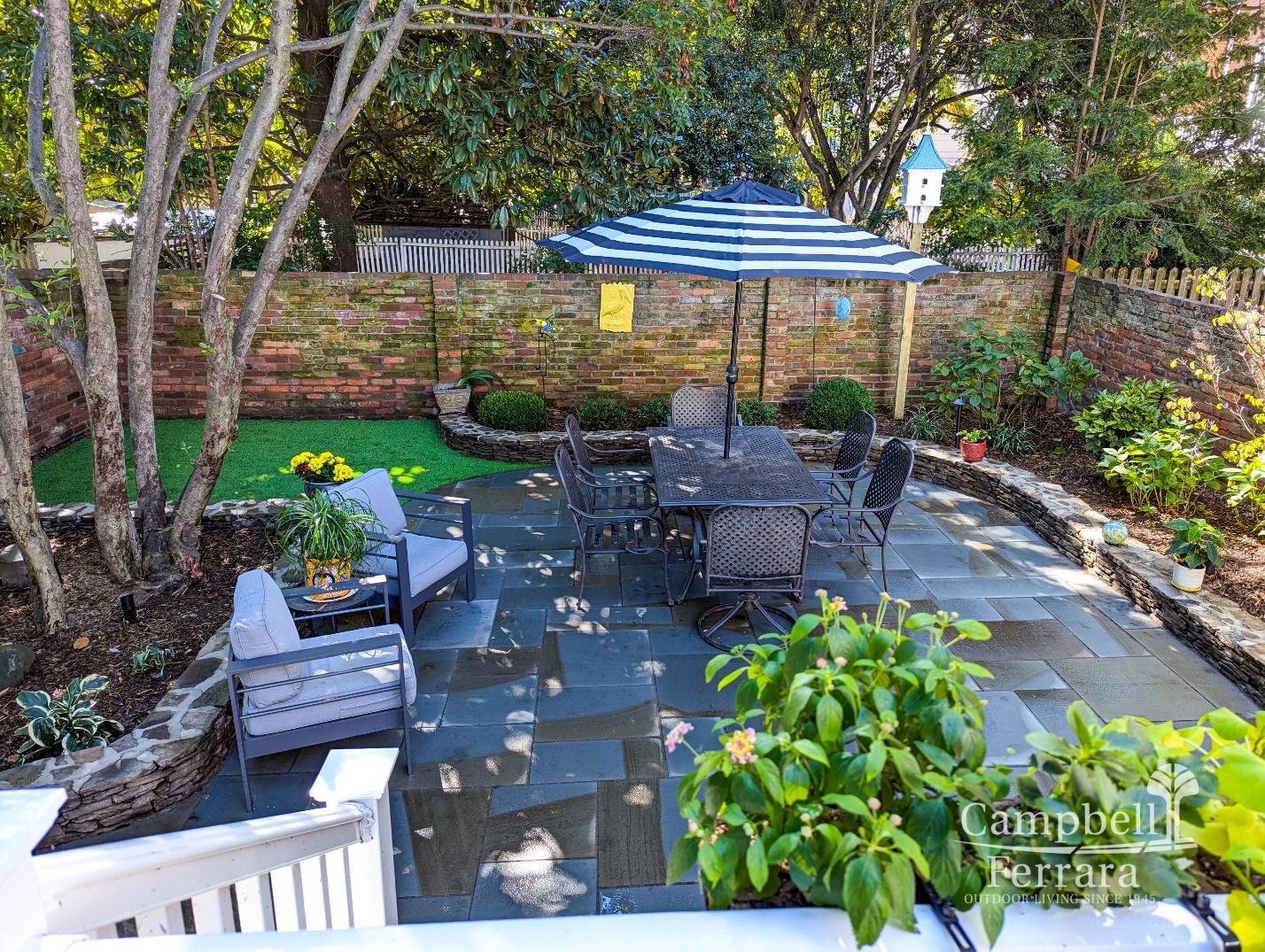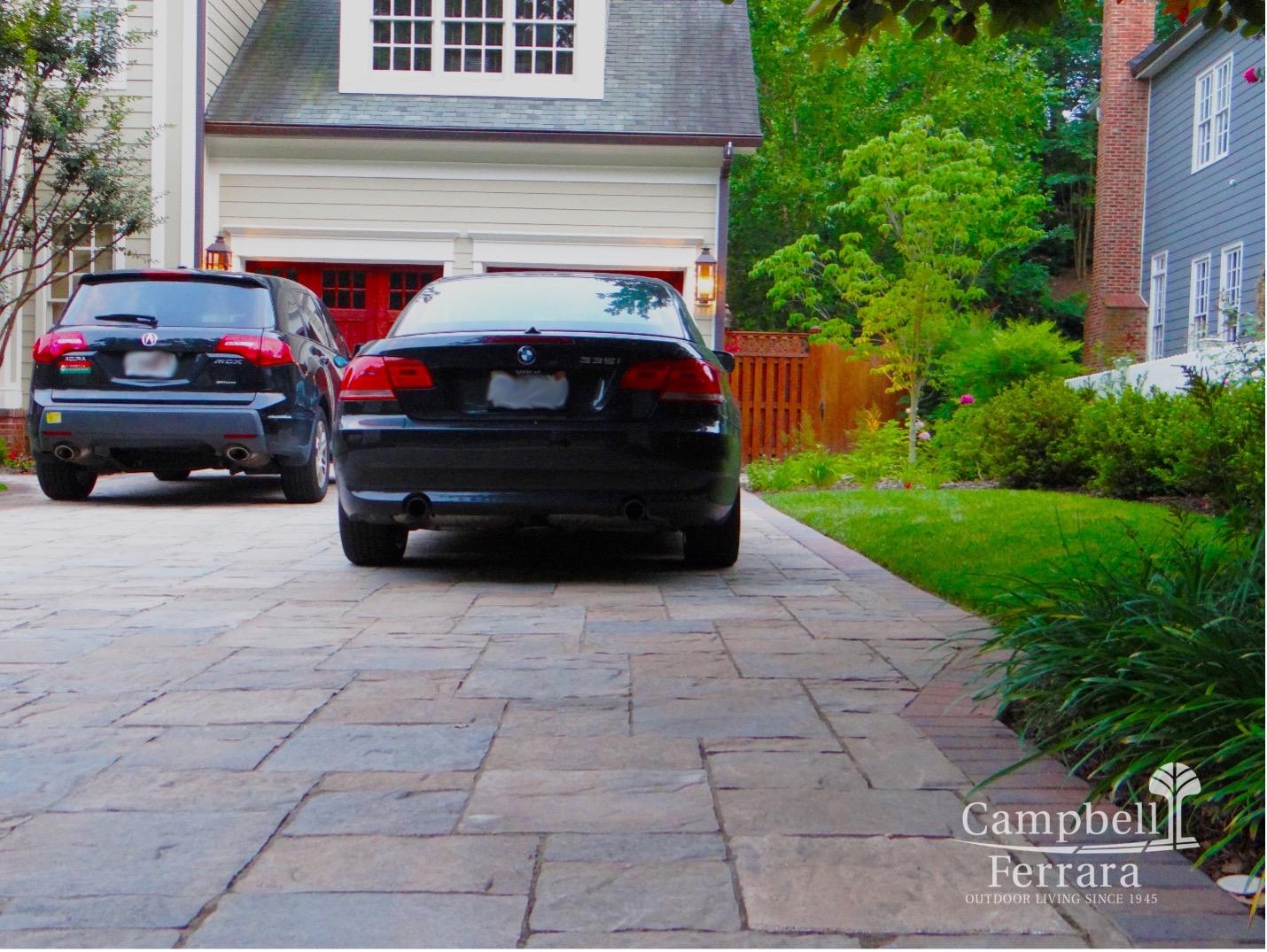
When heavy rain strikes, does your yard turn into a miniature swamp? Are puddles pooling near your foundation, threatening long-term water damage? These seasonal inconveniences are major warning signs that it’s time to consult experienced drainage contractors to discuss a solution that’s both practical and visually appealing: the drainage swale.
This guide will walk you through what swales are, how they work, the value they add to your outdoor living environment, and why they’re one of the most extraordinary drainage solutions available today. You’ll also get expert insight into design options, materials, and how they fit seamlessly into your landscape.
What Is a Drainage Swale?
A drainage swale is a shallow, gently sloped channel that directs rainwater away from areas where it can cause problems, such as near foundations or low-lying sections of your yard. Unlike traditional drainage systems that rely on underground piping, swales work with the natural contour of your land.
Swales can be lined with decorative materials like river rock, pea gravel, and boulders, and can include vegetation or even landscape lighting for added visual impact. Far from looking like a utilitarian ditch, a well-designed swale resembles a dry creek bed that’s attractive and functional.
Whether you’re managing stormwater or preventing erosion, swales offer a sustainable approach that enhances the beauty of your yard while solving a common problem.
Why You Might Need a Swale
If you’ve noticed any of the following signs, it’s time to consider a drainage swale:
- Standing water or puddles after a storm
- Erosion or muddy areas near pathways or planting beds
- Water creeping toward your retaining walls or home’s foundation
These aren’t just messy annoyances. Persistent drainage issues can harm plants, destabilize your landscape, and lead to costly repairs. A swale helps move water efficiently to a safe outlet, minimizing erosion and protecting your property’s long-term value.
The Dual Purpose: Function & Beauty
A drainage swale is one of the few landscape elements that performs heavy-duty work behind the scenes while adding curb appeal.
Functionally, swales:
- Prevent erosion by slowing down runoff
- Redirect water away from structures and planting areas
- Encourage groundwater recharge, helping your garden thrive naturally
Aesthetically, swales:
- Mimic natural stream beds
- Add organic shape and texture to your yard
- Create opportunities for integrating outdoor entertainment features, such as lighting and seating nooks
Imagine the elegance of polished river rocks weaving through your yard, lined with hardy ornamental grasses. It’s a water management solution that brings a stunning transformation to your yard.
Design Elements: Material Choices That Matter
Choosing the right materials for your swale enhances both its performance and visual appeal. Our hardscape experts often recommend the following:
-
River Rock
Larger and smoother, river rocks are excellent for high-volume water flow. Their size helps resist erosion, while their natural color adds to your landscape’s organic look. They’re ideal for swales that double as design centerpieces. -
Pea Gravel
Smaller and more rounded, pea gravel provides excellent permeability. It’s best used for decorative swales that handle light to moderate water flow. It also blends well with planted areas. -
Boulders
Strategically placed boulders help control fast-moving water and add dramatic structure. They can serve as focal points or borders, especially in sloped areas.
When layered with landscape fabric underneath, these materials keep the swale stable and low-maintenance. They are especially great for a pet-friendly yard.
Types of Swales
Swales aren’t one-size-fits-all. The right choice depends on your yard’s grading, soil type, climate, and overall drainage needs.
Whether you’re working with a landscape designer or seeking advice from seasoned drainage contractors, understanding the different types of swales will help ensure the right solution is implemented for your landscape.
-
Dry Swale
Ideal for properties that experience only occasional runoff, dry swales remain dry most of the year and activate only during rainfall. They typically require minimal excavation and are easy to integrate with existing landscape design. Dry swales can be lined with gravel or stone for added stability and aesthetics, making them a visually appealing solution that’s low maintenance. -
Wet Swale
Wet swales are designed for properties with high water tables or areas that receive frequent rainfall. These swales hold water for extended periods and often support water-tolerant plants such as irises, cattails, or rushes. In addition to enhancing drainage, wet swales contribute to local ecosystems by attracting pollinators and beneficial wildlife. -
Vegetated Swale
Vegetated swales are lined with native grasses, sedges, or durable groundcovers. These plants help slow runoff, reduce erosion, and filter out pollutants before the water infiltrates the soil or is redirected. They work well in residential settings where sustainability and visual appeal go hand in hand. A well-planned vegetated swale also helps define garden borders and contributes to a more natural-looking outdoor living area.
Planning Your Swale: How Our Team Approaches It
At Campbell & Ferrara, we know that designing a swale is not just about digging a trench. It’s about integrating form and function into your outdoor living plan.
Our landscape experts begin with a comprehensive site assessment that looks at slope, soil type, water flow patterns, and existing features like retaining walls and garden beds.
Once we identify where water collects or threatens to damage, we mark the optimal path and design a swale that complements the surrounding landscape design. Whether it’s flowing past a patio or winding near a fire feature, the goal is seamless integration.
If you’re working with a landscape designer, be sure to bring up drainage early in the conversation. It’s just as important to outdoor comfort as your outdoor fireplace, grill island, or seating wall.
Installation Steps: From Blueprint to Backyard
Our team follows a structured process to ensure your swale is both beautiful and functional:
- Mark the path of the swale based on water flow analysis
- Excavate the area, keeping a gentle slope for proper drainage
- Install landscape fabric to prevent weed growth and stabilize the base
- Layer with materials like river rock, pea gravel, or boulders
- Add plantings for soft borders and visual interest
- Incorporate lighting, if desired, for nighttime appeal
After the Rain: Preparing for Heat and Dry Spells
Swales provide year-round advantages that go far beyond stormwater management. By directing runoff efficiently, they help keep walkways dry, reduce erosion, protect your hardscape design, and preserve the integrity of your landscape investment.
But effective landscaping doesn’t end with drainage alone. During the hot summer months, it’s equally important to stay proactive about watering. While swales help handle excess moisture, other areas of your property may require regular irrigation. To keep your yard lush and healthy, explore our Summer Watering Guide for Zone 7 for expert tips on keeping your landscape resilient all season long.
Final Thoughts: Swales Are a Smart Choice!
A drainage swale is a practical, visually appealing feature that solves one of the most frustrating landscape issues: improper drainage. When planned and executed correctly, it integrates beautifully into your outdoor living environment, offering long-term benefits and immediate visual upgrades.
Whether you’re planning a new build or improving your current property, don’t overlook the importance of water management. Like a well-placed outdoor fire pit, a drainage swale enhances your yard’s usability and elevates your overall landscape experience.
Let our team of experts craft a custom solution that reflects your property’s character while protecting its integrity. Reach out today to explore your options with the region’s most trusted drainage contractors and landscape designer team.
For a truly functional and elegant landscape, contact us through our website or give us a call at (703) 354-6724. We’re ready to bring your vision to life.








